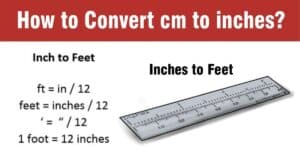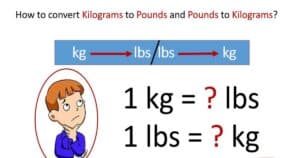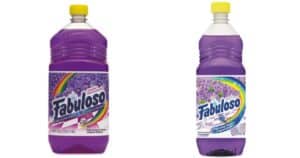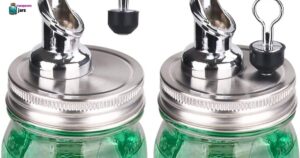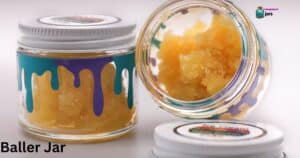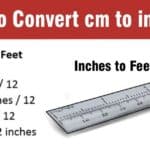Vacuum sealing mason jars without a Foodsaver involves using an alternate method like a hand pump or manual lid-sealing device. It usually requires specialized jar attachments to create an airtight seal, removing air from the jar to preserve contents. This method helps extend the shelf life of dry goods, preserving freshness without the need for a dedicated vacuum sealer.
Discover the secret to vacuum-sealing Mason jars without a Foodsaver. Say goodbye to bulky machines and embrace a simpler method for preserving foods. Learn the clever tricks that transform ordinary jars into vacuum-sealed storage wonders, keeping your food fresh for longer without the need for specialized equipment.
Vacuum sealing mason jars without a Foodsaver is possible using a manual pump or a brake bleeder tool. First, fill the jars with dry goods, leaving space at the top. Then, place a lid and a sealing ring on the jar, and use the pump or brake bleeder to extract air until a vacuum seal forms. This method helps preserve food by removing air from the jar, extending its shelf life.
Essentials for Vacuum Sealing Mason Jars
When you’re getting ready to vacuum seal mason jars, make sure you have the right tools. You’ll need clean mason jars with lids that fit snugly, a vacuum sealer attachment or a handheld vacuum pump, and special vacuum sealing lids or attachments made for mason jars.
Also, don’t forget the importance of proper preparation. Make sure the jars are clean and dry before you start sealing. This helps ensure a good seal and keeps your food fresh for longer. Having these essentials in place sets you up for successful vacuum sealing every time.
Vacuum Sealing Techniques Without Foodsaver
Vacuum sealing without a Foodsaver is possible using simple tools you might already have at home. One way is by using a hand pump or a manual vacuum sealing device. These devices work by extracting air from the jar, creating a tight seal that helps preserve food freshness.
Another technique involves utilizing vacuum valve lids specially designed for mason jars. These lids have a valve that allows air to escape when a pump is attached, achieving a vacuum seal. With these methods, it’s possible to vacuum seal mason jars effectively without relying on a Foodsaver machine.
Alternative Devices for Vacuum Sealing
When you don’t have a Foodsaver, there are other tools you can use to vacuum seal your Mason jars. Handheld pumps work well—they remove air and create a tight seal. Some jars come with special lids designed for vacuum sealing, making the process simpler. These devices may not be as fast as a Foodsaver, but they get the job done effectively.
Another option is manual vacuum sealing. It involves using a simple hand pump or a vacuum valve lid. While it might take a bit more effort, these tools provide an airtight seal without the need for an electric vacuum sealer. Both methods offer alternatives for sealing jars without relying on a Foodsaver machine.
Tips and Tricks for Successful Sealing
| Tips and Tricks for Successful Sealing | Description |
| Clean Jars | Ensure jars are clean and dry before sealing |
| Leave Headspace | Leave appropriate space in the jar for sealing |
| Use Fresh Sealing Materials | Opt for new lids and seals for effective closure |
| Properly Tighten Lids | Ensure lids are securely tightened onto the jars |
| Avoid Overfilling | Do not fill jars too full; leave room for sealing |
| Check for Air Leaks | Confirm there are no leaks after sealing |
| Store in Proper Conditions | Keep vacuum-sealed jars in cool, dry places |
| Label Jars | Label contents and date to track freshness |
| Test Seals Before Storage | Verify seals by pressing on lids before storing |
| Practice Patience | Allow time for the vacuum process to work effectively |
Safety Measures and Precautions
When handling vacuum sealing without a Foodsaver, it’s crucial to prioritize safety. Always ensure the jars are clean and dry before sealing to prevent bacterial growth. Additionally, be cautious with manual vacuum methods to avoid injuries; follow instructions carefully and use appropriate tools.
Another important precaution is to store sealed jars in a cool, dry place away from direct sunlight. This helps maintain the quality of the vacuum seal and preserves the contents effectively. Lastly, always check the seal before consuming any stored items to guarantee freshness and safety.
Comparing Different Sealing Methods
When it comes to sealing methods, there are various options beyond using a Foodsaver. Some people prefer manual techniques like using a hand pump or vacuum valve lids. These methods involve manually removing air from the Mason jars before sealing them tightly. They might take a bit more effort but can be effective for those without specialized equipment.
On the other hand, comparing these manual methods to a Foodsaver reveals differences in convenience and efficiency. While manual techniques work well, a Foodsaver tends to be quicker and more automated, providing a strong seal effortlessly. Additionally, when considering preserving items like Painted Mason Jars Waterproof, understanding these differences can help choose the method that suits your needs best.
Creative Uses for Vacuum Sealed Mason Jars

Vacuum-sealed Mason jars aren’t just for preserving food. They’re versatile containers with airtight seals that keep things fresh. You can use them for storing non-food items too! Imagine storing delicate keepsakes like old photos or letters. These jars protect from moisture and air, keeping your memories safe and sound.
Additionally, they’re great for organizing craft supplies like beads or buttons. The airtight seal ensures these items stay sorted and in top condition until you’re ready to use them. Think beyond the kitchen – these jars are your reliable storage buddies for all sorts of treasures.
FAQs
Can I Vacuum Seal Mason Jars Without a Foodsaver?
Yes, you can! While a Foodsaver is a popular tool, there are alternative methods to vacuum seal Mason jars effectively.
What’s an Easy Way to Vacuum Seal Mason Jars Without a Foodsaver?
Using a hand pump or brake bleeder kit along with jar attachments creates a vacuum seal by removing air from the jar.
Are There Any Tips for Successful Vacuum Sealing Without a Foodsaver?
Ensure jars and lids are clean and dry, and use proper sealing attachments to create an airtight seal when removing air.
How Long Can Vacuum-Sealed Mason Jars Last Without a Foodsaver?
Properly vacuum-sealed jars can maintain freshness for a similar duration as Foodsaver-sealed jars—months to years depending on the contents and storage conditions.
Conclusion
Vacuum sealing mason jars without a Foodsaver is possible with simple tricks. First, use a jar sealer attachment for your vacuum sealer, ensuring it fits your jar size. Alternatively, employ a manual pump with a brake bleeder kit. Place the jar lid with a rubber gasket inside and seal it tightly. Pump out the air until you notice the lid pulling down, indicating a vacuum seal.
Additionally, employing the boiling water method can create a vacuum seal. Fill the jar with your contents and close it with a lid and ring. Submerge the jar in boiling water for a few minutes, allowing it to cool naturally. The change in temperature creates a vacuum, sealing the jar.
Though a Foodsaver vacuum sealer is the most convenient option, alternative methods like jar attachments or the boiling water technique can effectively vacuum seal mason jars without a Foodsaver.



